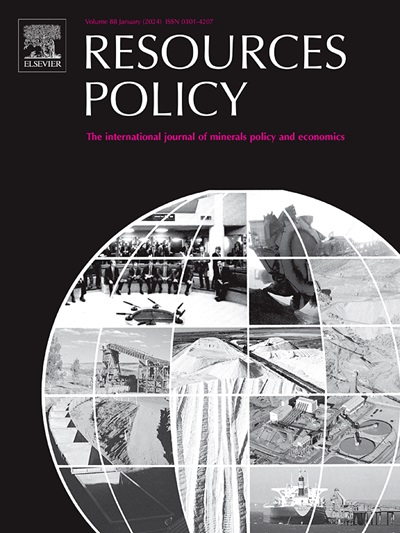Allies and enemies: On the political determinants of trade in critical minerals
IF 10.2
2区 经济学
0 ENVIRONMENTAL STUDIES
引用次数: 0
Abstract
While trade in critical minerals is increasingly shaped by geopolitical tensions, most existing studies emphasize economic factors and overlook the role of political alignment. This paper addresses that gap by examining how political dissimilarity – measured through UN voting patterns – affects bilateral trade in critical minerals, which are essential to renewable energy and high-tech applications. Moreover, we distinguish between supply-side and demand-side characteristics. On the supply side, we differentiate between processed and semi-processed products and between products traded in concentrated and diversified markets. On the demand side, we classify minerals based on whether they are used in energy and digital applications or not. Employing a gravity model over the period 1995–2022 and the Poisson Pseudo Maximum Likelihood (PPML) estimator, we account for zero trade flows and heteroskedasticity. Our analysis reveals that political dissimilarity with China and the United States is an important determinant of trade in critical minerals, particularly for semi-processed products, those used in energy and digital transitions, and products with more geographically concentrated markets. At the product level, minerals such as nickel, cobalt, vanadium, molybdenum, copper, and aluminum appear especially sensitive to strategic considerations. Finally, our findings are robust across different model specifications.
盟友与敌人:论关键矿产贸易的政治决定因素
虽然关键矿物的贸易日益受到地缘政治紧张局势的影响,但大多数现有研究都强调经济因素,而忽视了政治结盟的作用。本文通过研究政治差异(通过联合国投票模式衡量)如何影响关键矿产的双边贸易来解决这一差距,而关键矿产对可再生能源和高科技应用至关重要。此外,我们区分了供给侧和需求侧特征。在供应方面,我们区分加工产品和半成品,区分在集中市场和多样化市场交易的产品。在需求方面,我们根据矿物是否用于能源和数字应用来对其进行分类。采用1995-2022年期间的重力模型和泊松伪极大似然(PPML)估计器,我们解释了零贸易流量和异方差。我们的分析表明,与中国和美国的政治差异是关键矿产贸易的一个重要决定因素,尤其是半成品、用于能源和数字化转型的产品,以及地理上市场更集中的产品。在产品层面,镍、钴、钒、钼、铜和铝等矿物似乎对战略考虑特别敏感。最后,我们的发现在不同的模型规范中都是健壮的。
本文章由计算机程序翻译,如有差异,请以英文原文为准。
求助全文
约1分钟内获得全文
求助全文
来源期刊

Resources Policy
ENVIRONMENTAL STUDIES-
CiteScore
13.40
自引率
23.50%
发文量
602
审稿时长
69 days
期刊介绍:
Resources Policy is an international journal focused on the economics and policy aspects of mineral and fossil fuel extraction, production, and utilization. It targets individuals in academia, government, and industry. The journal seeks original research submissions analyzing public policy, economics, social science, geography, and finance in the fields of mining, non-fuel minerals, energy minerals, fossil fuels, and metals. Mineral economics topics covered include mineral market analysis, price analysis, project evaluation, mining and sustainable development, mineral resource rents, resource curse, mineral wealth and corruption, mineral taxation and regulation, strategic minerals and their supply, and the impact of mineral development on local communities and indigenous populations. The journal specifically excludes papers with agriculture, forestry, or fisheries as their primary focus.
 求助内容:
求助内容: 应助结果提醒方式:
应助结果提醒方式:


